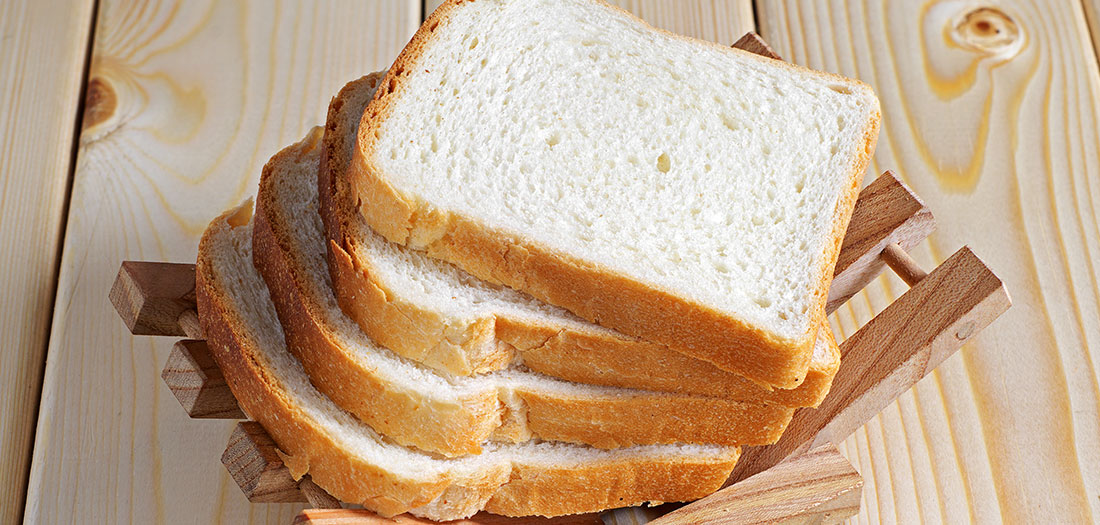Common Foods That Are Sabotaging Your Efforts
Eat fiber and protein-filled meals. Check.
Drink plenty of water. Check.
Get at least 30 minutes of exercise daily. Check.
Incorporate interval training into workouts. Check.
Strength train. Check.
Make an effort to move more (take stairs instead of the elevator, walk to the water cooler, etc.) throughout the day. Check.
These lifestyle habits help keep the body’s metabolism at top speed, but it is also important to ensure that the foods you’re consuming aren’t weighing you down with too many calories and not enough nutrients. Poor dietary choices may negatively impact your energy balance and cause fat gain.
To keep your caloric intake reasonable, swap the following densely caloric doozies for these more reasonable choices:
High-calorie Don’t: Refined Carbs
If cookies, cakes, white breads, sugary cereals and jams are literally your jam, your waistline may be taking a hit. These foods are stripped of their nutrients and fiber, and they lack protein; both protein and fiber are important players in helping you feel full longer. Without protein and fiber, foods are digested quickly and the body doesn’t have to spend much energy to metabolize them. This metabolizing of the food you eat is known as the thermic effect of food and accounts for 10% of your total energy expenditure, which for a 2,000 calorie per day diet, could equal approximately 200 calories.
In one study, participants’ energy expenditure after eating multi-grain bread and cheddar cheese sandwiches (whole food) was compared to their energy expenditure after eating white bread and a processed cheese product (processed food). While the sandwiches contained an equal amount of calories, protein, carbs and fat, the processed meal resulted in 50% less after-meal energy expenditure, which was a savings of about 64 calories.
Switch-it-up Do: Swap refined and processed carbs like white breads, white flour, cookies and cake for unprocessed, wholesome, quality carbohydrates like fruits and beans, and whole grains like oats, quinoa, barley and millet. Other good choices include starchy veggies like potatoes, peas, and corn (non-starchy veggies are great, too, but they don’t have as many calories to provide long-term fuel for the body).
Wholesome, quality carbs keep your hunger at bay by providing long-lasting energy, thanks in part to their fiber, which slows digestion, and causes the body to have to burn extra calories to break it down. Beans, quinoa, barley and millet contain protein, which helps to keep energy levels stable while increasing the thermic effect.
High-calorie Don’t: Sugary Drinks

Most people don’t realize that you can slurp down loads of calories from soda (or any caloric beverage) without your brain getting a signal that you’ve consumed calories and don’t need to eat more. Not only is that bad for your waistline, but getting consuming sugary drinks also displaces other nutrients that could be gained by eating whole foods. For example, drinking orange juice leads to consuming way more calories and sugar versus eating an orange, which contains other important phytochemicals and fiber.
Switch-it-up Do: Drink water. You’ve heard this 100 times, because it’s true—every chemical reaction in your body relies on water. Drink adequate amounts of water and your body functions as a well-oiled machine. If you need help consuming more water, try adding fresh lemon or lime slices as flavorful non-calorie boosts, or mix it up by drinking calorie-free sparkling water.
High-calorie Don’t : Saturated Fats

Foods high in saturated fat (such as butter, full-fat dairy products, fatty beef, pork, poultry with skin, lamb and baked goods made with palm oils) often lack two important components that increase the thermic effect: protein and fiber.
Switch-it-up Do: While all fats are the same calorically (9 calories per gram), consider swapping saturated fats for omega-3s, which are found in fatty fish including salmon, herring, sardines, whitefish, tuna, walnuts and flaxseeds. Omega-3s are thought to be heart protective, whereas saturated fat has been linked to a higher risk for cardiovascular disease. Aim to consume at least 3 ounces of omega-3-rich fish twice a week.



